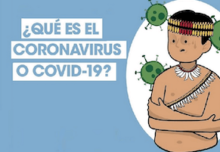 Situation of the Guarani Kaiowa and Ñandéva in Mato Grosso do Sul – ABA statement
Situation of the Guarani Kaiowa and Ñandéva in Mato Grosso do Sul – ABA statement
Immediate action or genocide permitted by the Brazilian State
Given the sequence of actions by armed groups against Guarani Kaiowa and Guarani Ñandéva communities in Mato Grosso do Sul over the last thirty days, which have resulted in deaths, injuries and traumas that will be borne by surviving witnesses for their rest of their lives, either the Brazilian State adopts a firm stance and implements the necessary and urgent measures expected of it, ensuring that the rights of the region’s indigenous peoples are respected, as guaranteed by the 1988 Federal Constitution and international legislation, or its failure to act may well go down in the annals of indigenous history and Brazilian indigenism in the region as behaviour clearly complicit with what is, to all intents and purposes, the planned extermination of an indigenous people in twenty-first century Brazil.
Over the last decade there have been more than a few signs that a critical and alarming situation of violence against the Guarani has been developing in Mato Grosso do Sul. This does not mean that the violence did not exist beforehand. On the contrary, whether veiled or explicit, everyday or structural and systematic, violence was a constitutive element of the plural and hierarchized society that took shape in the state. More recent events have merely made the wider public aware of the true foundations to the colonial order established in the region: the relations of domination and exploration based around brute force and segregation, and the consequences for the indigenous population. The configuration of a situation of ethnocide and genocide.
The Figueiredo Report, produced in 1968 by a commission established by the Ministry of the Interior to investigate irregularities in the former Indian Protection Service (Serviço de Proteção aos Índios: SPI) and which formed part of the inquires undertaken by the National Truth Commission, relates innumerable cases of torture and violence to which the Guarani were subjected during the entire period of colonization of Mato Grosso do Sul and the west of Paraná, namely between the 1940s and 1960s. The 7th Regional Inspectorate, based in Curitiba (PR), became known at the time as the most corrupt and violent division of the SPI, acting explicitly in favour of the interests of logging firms and colonization companies. In 1943, the Vargas government created the National Agricultural Colony of Dourados (CAND), overlapping the lands where the Kaiowá were living and from where they obtained their sustenance in autonomous form. Over time, the colonies transformed into farms and the forests into pasture, crop lands and extensive plantations. This led to various Guarani families and communities abandoning their places of habitation, swiddens and so on to move to other regions of the country or even to neighbouring countries. Those who stayed were left to adapt as far as possible to a landscape subject to continuous environmental degradation and physical depletion, while they were confined to small portions of land.
ABA along with other public institutions and the Guarani Kaiowa and Guarani Ñandéva themselves, through their leaders and associations, have been regularly and systematically calling attention over the last decade to what has been happening in Mato Grosso do Sul, and the actions and inaction of the Brazilian State. Below we list some of the events that we have been highlighting and denouncing during this period.
On hearing that early morning on August 8th 2011 a Kaiowá group had decided to return to the Pyelito Kue-Mbarakay territory, an area located in the municipality of Iguatemi (MS), ABA asked for information from the Ministry of Justice (MJ) and FUNAI (National Indian Foundation) about the steps being taken in response to the serious events in Iguatemi. In July 2003 a group had tried to return and two days later the gunmen from the farms had invaded the indigenous camp and expelled them with extreme violence, torturing and breaking the arms and legs of women, children and elders.
Similarly, in December 2009 a Guarani-Kaiowa community recently camped on the side of a dirt road in Iguatemi municipality – there to demand their right to Mbarakay, the territory that they traditionally occupied – came under attack. People reported more than a dozen hooded men arriving in various vehicles in search of Adélio Rodrigues, the community’s political leader. Shouting for ‘the hairy one,’ the hooded men beat and abused the people camped there, dragging them by their hair. The shaman Atanásio Teixeira, 70 years old, a daughter and a grandson, among several other people, were severely beaten up and injured by rubber bullets. The political leader was not found only because he had left the camp a short while before the invaders arrived. However his 18-year old son, Arcelino Oliveira Teixeira, was taken by the attackers, disappearing without trace. Referring to this episode, the site of the Attorney General in Mato Grosso do Sul states that “the Federal Prosecutor’s Office (MPF) in Dourados has requested an inquiry to be opened by the Federal Police in Naviraí to investigate the crime. Dozens of 12 calibre crowd control cartridges (‘rubber bullets’) were found and there are indications that an armed militia was formed.”[1]
In October 2009, a Guarani-Ñandéva community recently camped to demand their return to Ypo’i, the territory traditionally occupied by themselves, in the municipality of Paranhos, was attacked by dozens of armed men. Without any attempt at dialogue, the men violently beat the indigenous occupants of the camp (men, women, the elderly and children) and fired shots in various directions. To escape the assailants, the Guarani-Ñandéva scattered. Two indigenous teachers, Genivaldo Vera and Rolindo Vera, were dragged by their hair and taken away by the attackers. Only days after the attack was the body of one of them found with marks of violence, tied to a tree branch along a stream (the Ypo’i) some 30 kilometres from the place where they were attacked. The other teacher has been unheard of since.[2]
In August 2011, during a fresh attempt to return to the claimed territory, groups from Mbarakay and the neighbouring community of Pyelito were subject to various similar attacks, also employing rubber bullets, and various people were injured. Four months later, on November 18th 2011, the political and spiritual leader of the community of Guaiviry was killed. He had recently been camped in the area identified by himself as the territory traditionally occupied by his people. According to witness accounts, Nísio, aged 59, died after being shot in the head, chest and arms. His body was then taken away in a truck along with two teenagers and a child of five. Other people had been injured by rubber bullets.
Likewise, in October 2012 another Guarani Kaiowa group, formed by members of the communities of Pyelito Kue and Mbarakay, reoccupied a tiny portion of their territory and tenaciously resisted a court order for their eviction. This event generated a widespread and unparalleled popular manifestation of support on Brazil’s social networks. At the time (more specifically, on October 25th 2012) this prompted a declaration by FUNAI, made via a text published on its institutional web site, which emphasized “the seriousness of the situation of the Guarani and Kaiowá” in Mato Grosso do Sul. The statement indicated that representatives from the institution had taken part in a large assembly (Aty Guassu) of these two peoples and underlined its position: “FUNAI thus reaffirms its commitment to approve the Detailed Identification and Delimitation Reports for the Guarani and Kaiowá indigenous lands in the Cone Sul [Southern Cone] region of Mato Grosso do Sul within the timescales agreed at Aty Guassu.”
In February 2013, ABA demanded from the authorities a rigorous investigation into the attack on a group of Guarani Kaiowa and Guarani Ñandéva perpetrated by gunmen from farms located in the municipality of Caarapó (MS). On this occasion, a Guarani Kaiowá adolescent was killed by gunshot in the proximities of the Tey’i kue/Caarapó Reserve/Village. It also demanded the implementation of measures to guarantee the physical safety of the around 200 indigenous people camped in the locality – since there was a risk of a new attack by the gunmen – and, above all, a speeding up of the process of delimiting and legally recognizing their lands.
Two months after this attack, on April 18th 2013, we also issued a communiqué calling on the State for urgent action to protect and ensure the rights of the Guarani Kaiowa and Guarani Ñandéva in Mato Grosso do Sul. There are more than 50,000 people (one of the largest indigenous contingents in the country) confined to tiny spaces due to the expropriation of their traditional territories, a situation that has provoked overcrowding and high rates of violence and suicide, as well as extremely precarious economic conditions. The communiqué was sent to President Dilma Rousseff and officially received by the Presidency of the Republic on April 30th 2013. Along with ABA, the text was signed by the SBPC (Society for the Advance of Science), CESA (Scientific Society for Art Studies), ANPUR (National Association of Postgraduate Programs in Urban and Regional Planning) and SBP (Brazilian Psychology Society) (Communiqué no. 015/2013/ABA/PRES).
In this statement we recall that because of this situation and the tenacious land campaigns of the Guarani Kaiowa and the Guarani Ñandéva, the Brazilian State sent six technical groups into the field to identify and delimit indigenous lands. Initiated about five years ago, carrying out these studies proved extremely arduous due to continual political interferences and legal challenges made by the ruralist sectors. Such actions led to endless paralyzations of the administrative processes, as well as the establishment of a local climate of violence, which resulted in the murder of various indigenous people and hostile treatment of the anthropologists responsible for the technical studies.
Despite these difficulties, most of the detailed reports were concluded. However, just one had been published: the report for the Iguatemipegua I Indigenous Land (composed of Pyelito Kue and Mbarakay), published in January 2013. This immediately drew strong responses from the ruralists, who pressed the Chief of Staff’s Office to suspend the other processes, seeking to prevent publication of their respective reports. Presented with this fact, we demanded swift resolution of the land legalization processes in Mato Grosso do Sul, including immediate publication of the cited reports and a search for effective ways of guaranteeing indigenous possession of the land, indispensable to the physical and cultural reproduction of their families.
But events rushed ahead once again, showing the need for urgent and concrete actions. A few days after the earlier event, in May 2013, Oziel Gabriel, a teacher from the Terena people, was tragically killed. A ‘negotiating table’ was formed, mediated by the National Council of Justice and involving the participation of members of the Federal Government. The action proved no more than palliative, lacking the means and will for decision-making, and the negotiations came to a standstill. Worse, the Executive – principally, but not solely, through the work of the Ministry of Justice – decided to freeze the administrative processes for indigenous land demarcation being conducted by FUNAI, thereby ignoring indigenous territorial rights not only in Mato Grosso do Sul but across the entire country.
In June this year (2015), acts of violence were once again committed by rural producers in the encampment of Guarani Kaiowa from the community of Kurusu Amba, in the municipality of Coronel Sapucaia, in Mato Grosso do Sul. According to information from the digital media, such acts of violence led to the destruction and burning of huts improvised by the indigenous population, the death of a child about one year old, charred, and the disappearance of at least another two indigenous people. This was the fourth time that the Kaiowa of Kurusu Amba had been repelled during their attempts to return to their territory, reflecting the State’s failure to fulfil its constitutional role of guaranteeing these territories. In all these attempts, a violent retaliation ensued with various deaths and serious injuries on the indigenous side.
Returning to the episode of Kurusu Amba, we can observe significant changes in the behaviour of the police forces operating in Mato Grosso do Sul, when compared to how they acted in the 1990s and the beginning of the 2000s. The Federal Police, which had once offered some physical protection to the indigenous population, has more recently demonstrated forms of obstructionism in acting in a timely fashion to prevent or limit acts of violence. As a consequence, and with the aim of filling this vacuum, detachments from the Armed Forces had to be sent to the region. However, their numbers were few and their presence highly intermittent. Completing this negative scenario, in recent years the region’s rural producers have been hiring companies specialized in security, which began to act in organized form as paramilitary militias, worsening tensions, increasing the acts of violence and worsening the climate of insecurity and terror among the indigenous population. The companies included Gaspem Segurança, which, as the MPF-MS itself has denounced, was held responsible for the deaths of various indigenous leaders, leading to its owner being placed under house arrest.[3]
In summary, the administrative failures responsible for delaying publication of the reports identifying and delimiting indigenous lands, the insecurity caused by the inefficiency of the police forces, the prevalent and frequently unpunished actions of security firms and henchmen, combined with the legal challenges to the land demarcation processes, can all be said to have helped generate a climate of tension in Mato Grosso do Sul in which a long predicted genocide is slowly becoming concrete. By displaying certain attitudes and promoting certain practices and policies, the Brazilian State from the Executive to the Judiciary, passing through the National Congress, has inevitably assumed the role of an accomplice to this process, a responsibility that ABA has looked to highlight and denounce here.
Brazilian Anthropology Association and its Commission of Indigenous Affairs
Brasilia, October 14, 2015.
Online versions: Portuguese; English
[1] The Ministério Publico Federal [MPF, Brazil’s public ombudsman ministry] treats the case as an act of genocide, since violence motivated by ethnic questions was perpetrated against an indigenous group. The site also observes that “in the photos taken it is possible to see the marks of the attack in the indigenous encampment, like the burnt huts, belongings and food.” For more information, see this report by MPF.
[2] In this episode, the Federal Prosecutor’s Office in Mato Grosso do Sul accused six people, including politicians and farmers from the region. They are accused of aggravated murder, concealment of corpses, the use of firearms and physical injury of the elderly. For more information, see MPF.
[3] GASPEM (Grupo de Apoio, Segurança Privada e Empresarial) has worked in Dourados and the wider region since 1996. The investigations carried out by the Federal Prosecutor’s Office lead it to conclude that GASPEM is “an organized group that spreads violence against the Guarani-Kaiowá in the southern cone of the State of Mato Grosso do Sul through brutal persons referred to as ‘vigilantes,’ most of the time unqualified to carry out the activity, carrying heavy firearms and munition, in order to practice actions contrary to the law and public safety.” For more information, see MPF.
Image: Daily Mail
Check more Public Issues News!










